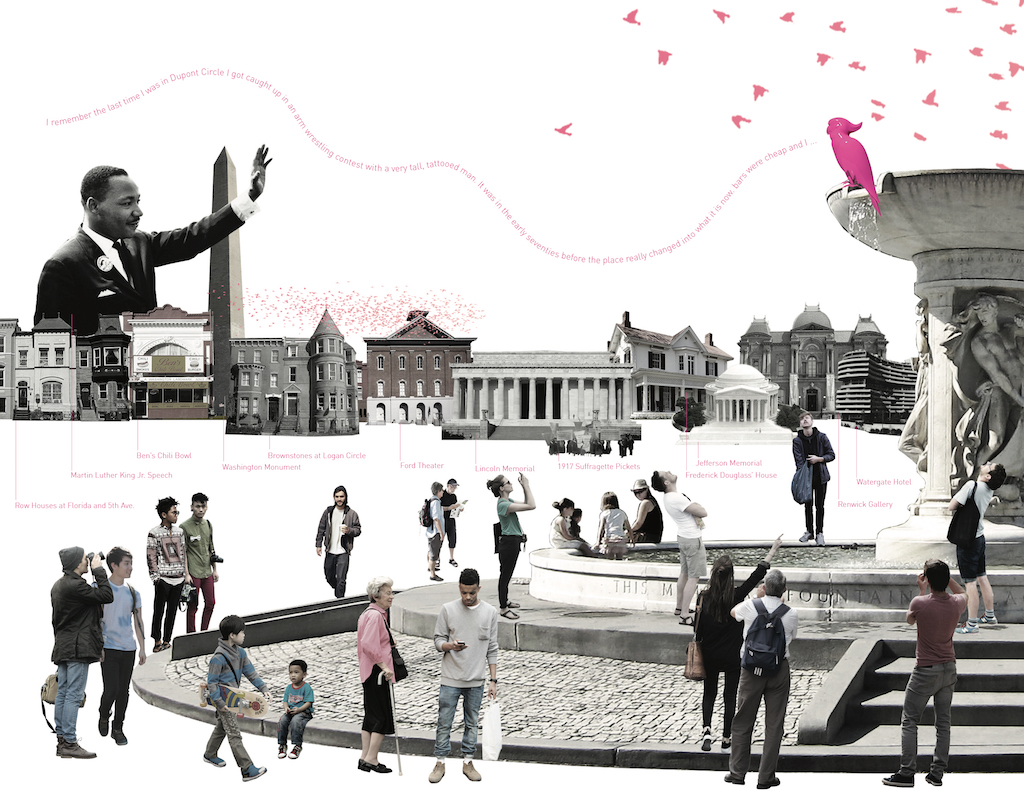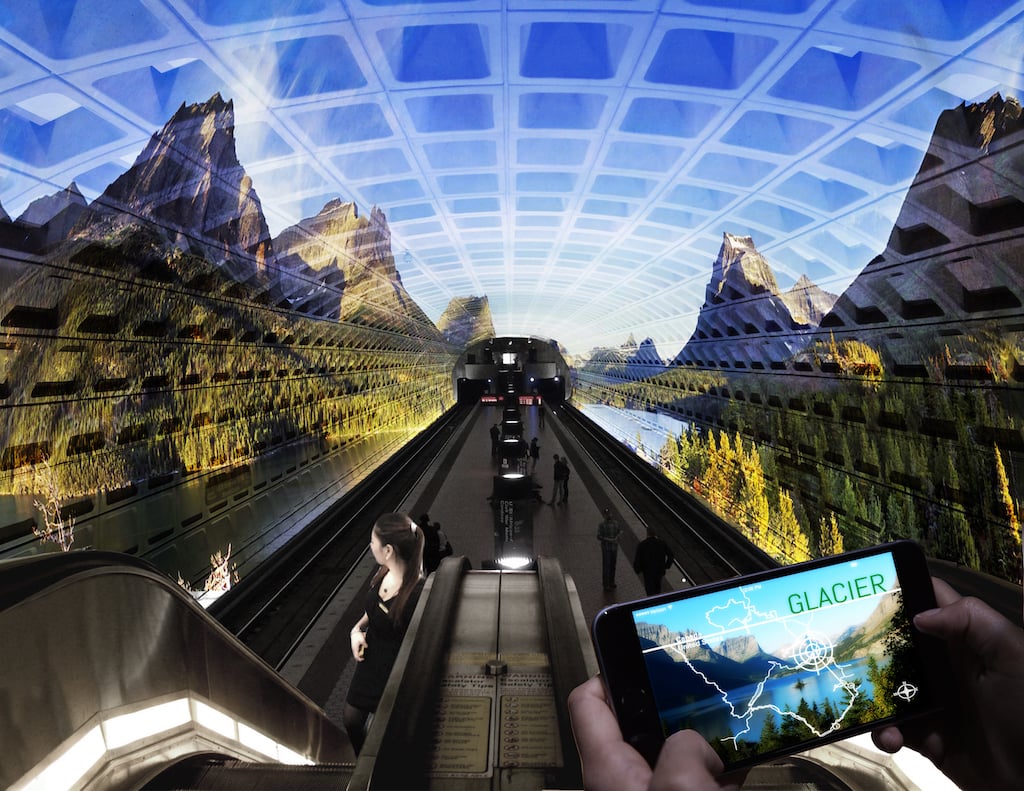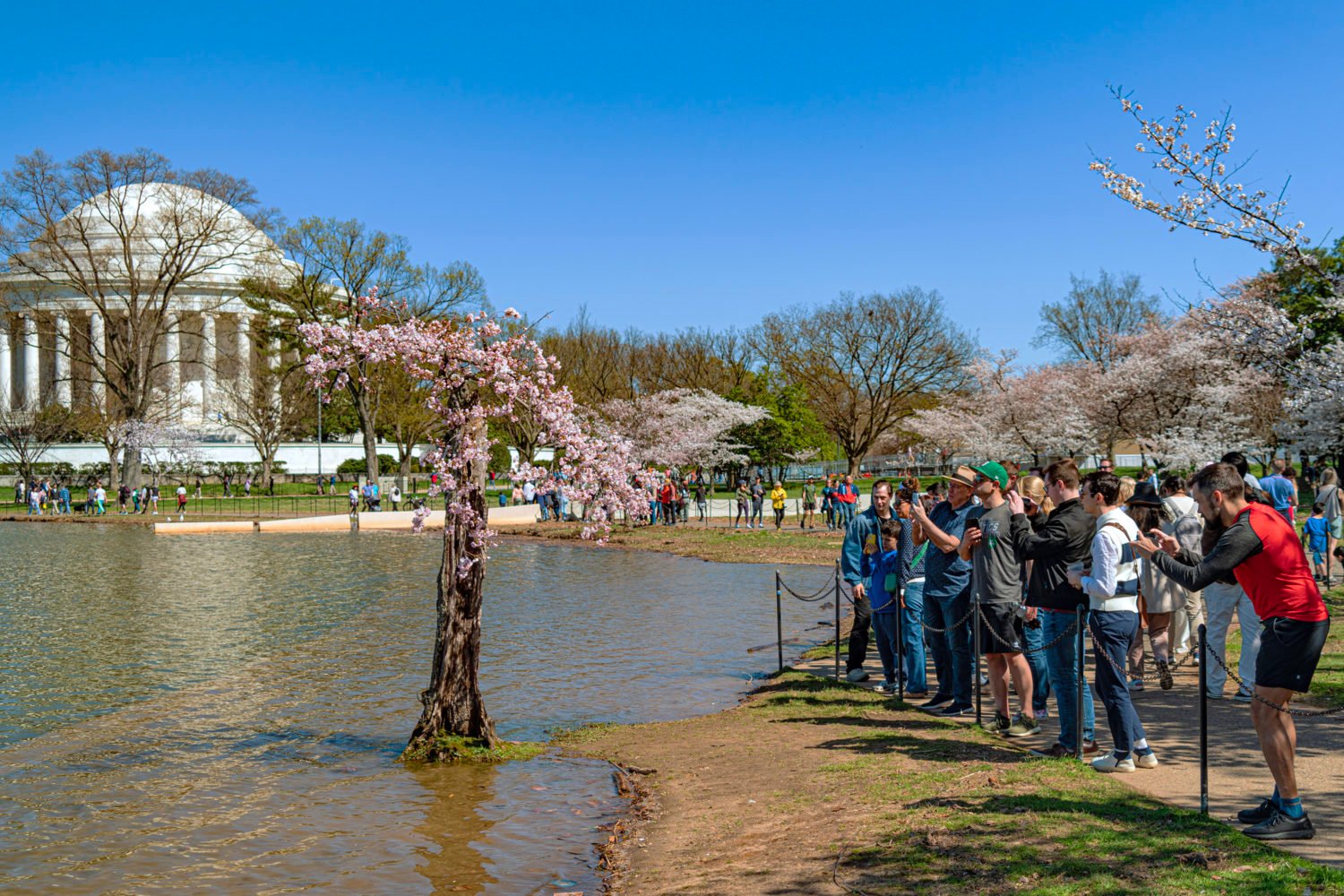Climate change, immigration, oral histories, and national parks are the subjects of the four finalists selected in “Memorials for the Future,” a design contest being held to envision what kinds of new monuments and historic sites Washington might add to its skyline years from now.
The contest, held by the National Capital Planning Commission, the National Park Service, and the Van Alen Institute, picked its finalists Wednesday night from 30 semifinalists. While one popular entry—”Cultur-Altar,” a memorial to the Prince featuring a sculpture of his “Love Symbol” made from the ashes of burnt offerings—did not make the final cut, the selected entries still aim to tell powerful stories.
All of the designs skew far from the granite slabs and marble columns that make up so many of Washington’s monumental sites. Instead, they propose using audio, video, natural elements, and even time itself.
“Climate Chronograph,” the proposed memorial to the effects of unmitigated climate change, proposes planting rows of cherry trees at the tip of Hains Point to act as a “living observatory for an unfolding global story.” Over the the years—think at least a century—if sea levels continue to rise, more of Hains Point becomes submerged and the trees die. This is not that hyperbolic: Hains Point is one of the most vulnerable spots in DC, according to projections of the effects of rising sea levels.

In “The Im(migrant),” a trail along the Anacostia River would honor the experiences of migrant populations. Along with plantings and informational installations, its design team also proposes using a podcast series to tell the story of the Great Migration in the early 20th century.

Audio plays an even larger role in “Voiceover,” which proposes developing a fleet of automated “storytellers” that would hover over Washington’s existing monuments and historic sites and play for visitors stories about those locations and what they honor. The “parrots” would serve everything from the Lincoln Memorial to the Dupont Circle fountain to Frederick Douglass’s house.

The last finalist, “American Wild,” could vastly improve the experience of waiting for Metro—and incite a lot of vacation planning. Proposed as a memorial to the American wilderness, it would install high-definition projection devices at underground Metro stations that would cast images of the national parks on the ceilings. Why stare at the floor at U Street when you could, say, gaze at the majesty of Glacier National Park?
While none of these designs are likely to become actual memorials any time soon, the goal of the contest is to leave some suggestions for the monument builders of the future. The four finalists will all receive $15,000 stipends to further develop their proposals. A winner will be announced in September.

















